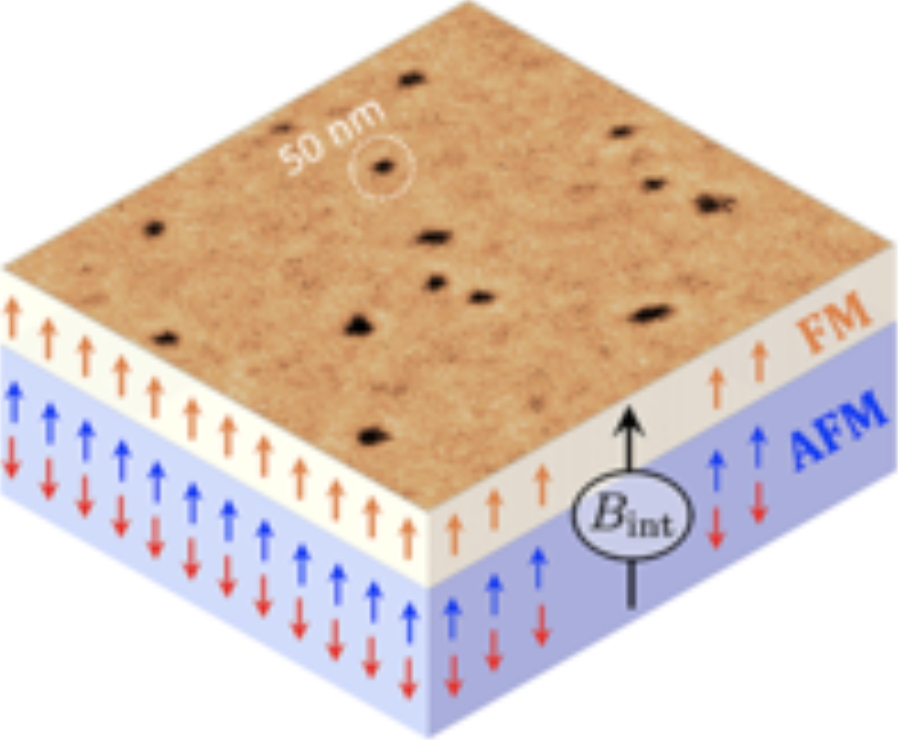Magnetic skyrmions are currently fascinating many research groups in the world, as they could offer a new way to store and process information in our computers. These nanoscale magnetic textures are composed of elementary nanomagnets that wind to form a stable spiral structure, like a well tighten node. Although predicted in the 80’s, it has only been observed for the first time in 2009. Three years later, two research teams demonstrated that skyrmions can be manipulated by very low electrical currents, which opens a path for their use as information carriers in computing devices. Several groundbreaking memory and logic devices based on the manipulation of skyrmion in nanotracks have thus been proposed, that promise very large information density and low power consumption. However, these applications still remained distant as skyrmions had been observed only at low temperature or in the presence of large magnetic fields and in exotic materials far from any applications.
In 2016, researchers at the Irig's Spintec laboratory made an important discovery by demonstrating the existence of magnetic skyrmions at room temperature in a very thin layer of Co (a few atoms thick) in sandwich between a layer of Pt and magnesium oxide.
In a new study, the researchers made a further step towards applications by demonstrating that skyrmions can be stabilized in the absence of any applied magnetic field, a crucial advantage for devices. The icing on the cake, the skyrmions are 5 times smaller than before (up to 30nm), which increases the density of information in memories. To achieve this result, the researchers used a so-called "exchange bias" stack, which combines the ultra-thin ferromagnetic layer hosting the skyrmions with an antiferromagnetic layer. This type of stack is already used in the MRAM magnetic memories developed at the Spintec laboratory. To observe these very small skyrmions, Spintec used an innovative technique, NV (Nitrogen-vacancy) magnetic microscopy, mastered by the University of Montpellier. These results are promising for the realization of memory and logic devices based on magnetic skyrmions.

A NV center magnetic microscopy image of magnetic skyrmion stabilized at zero external magnetic field on top of a sketch of the ultrathin film stack. The stack is composed of a Pt/Co/NiFe magnetic layer (FM) exchange coupled to an IrMn antiferromagnet (AFM). The exchange coupling with the IrMn layer leads to an effective Bint on the FM which allows the stabilization of the small skyrmions at zero field.